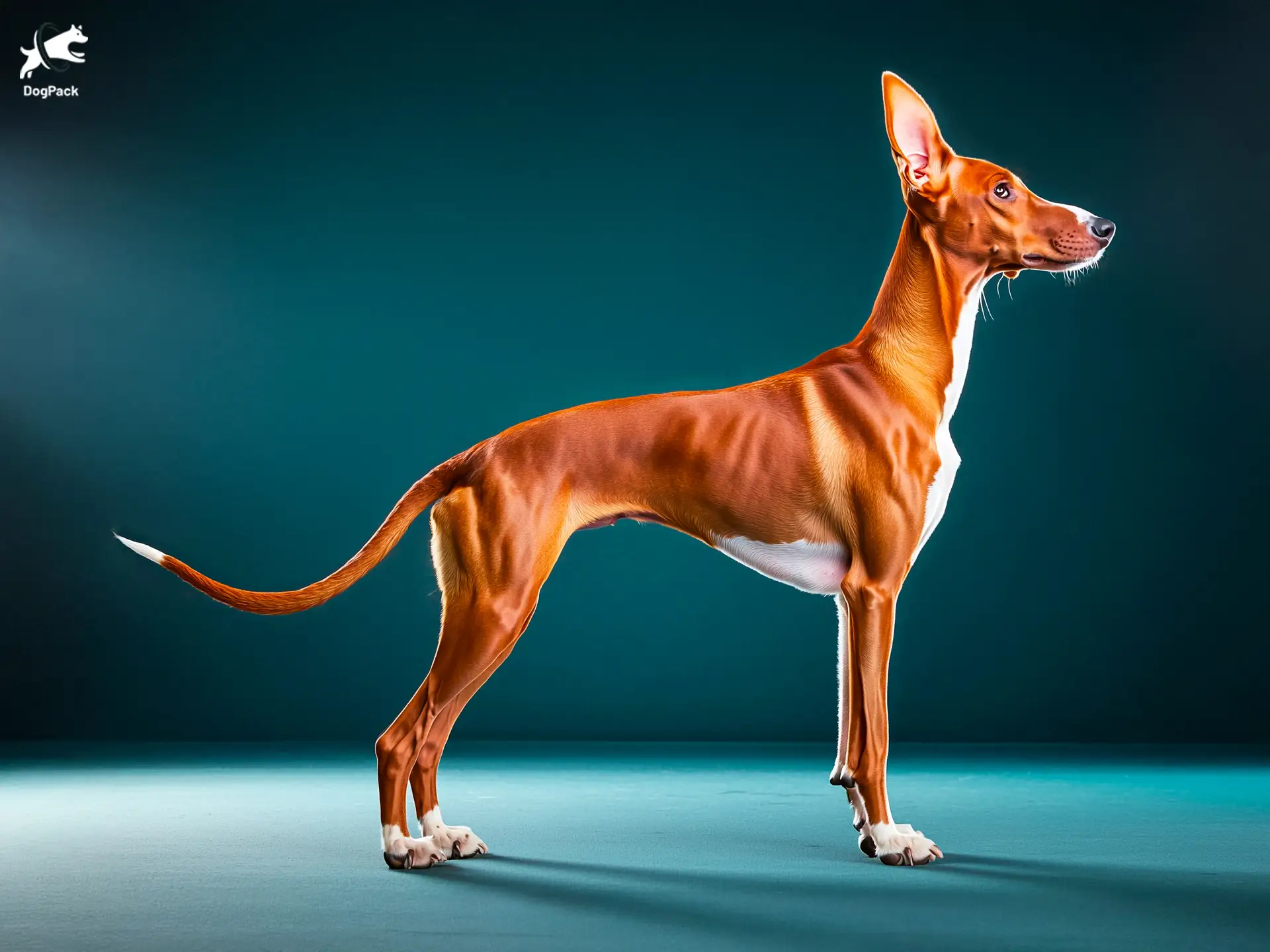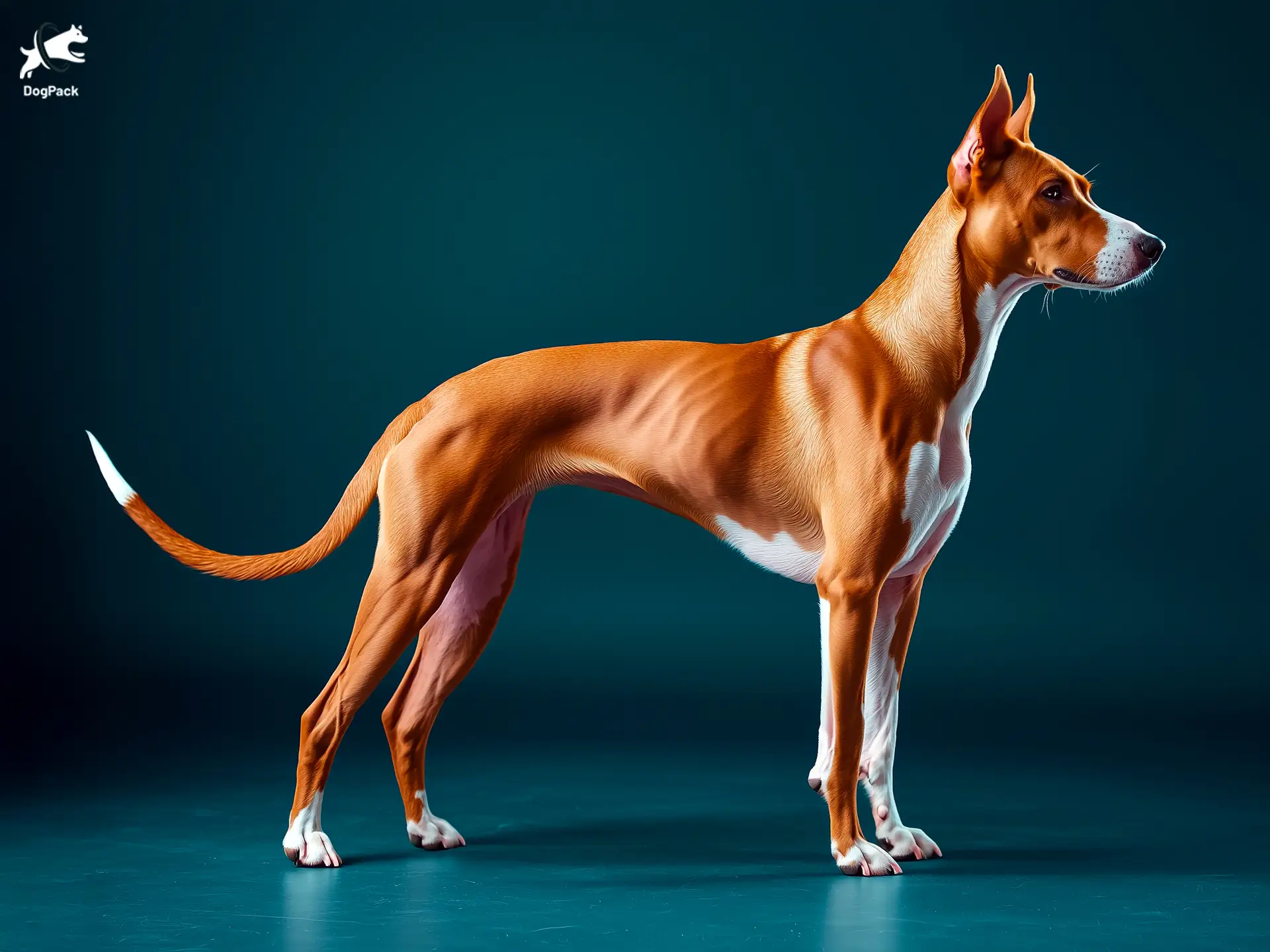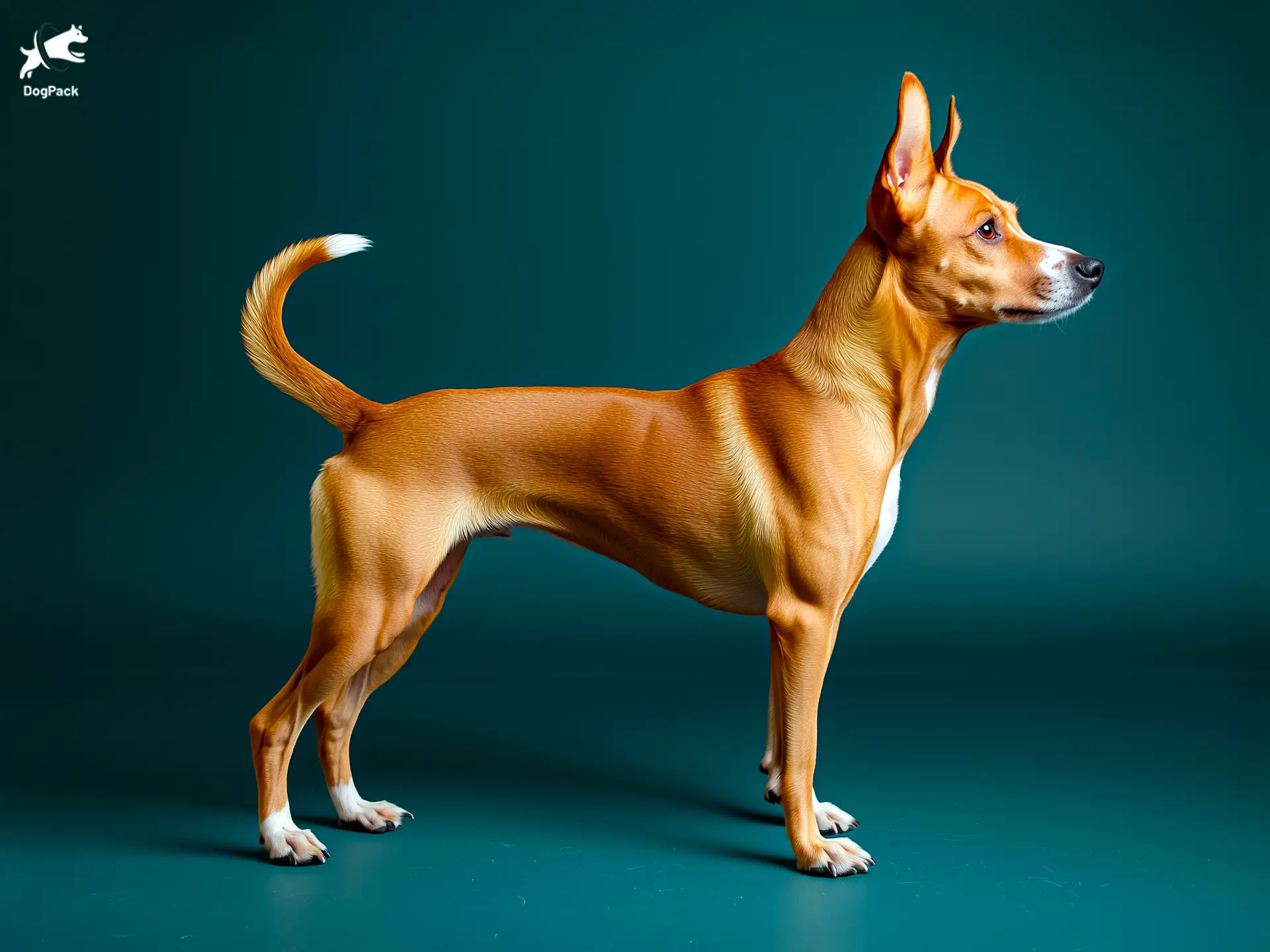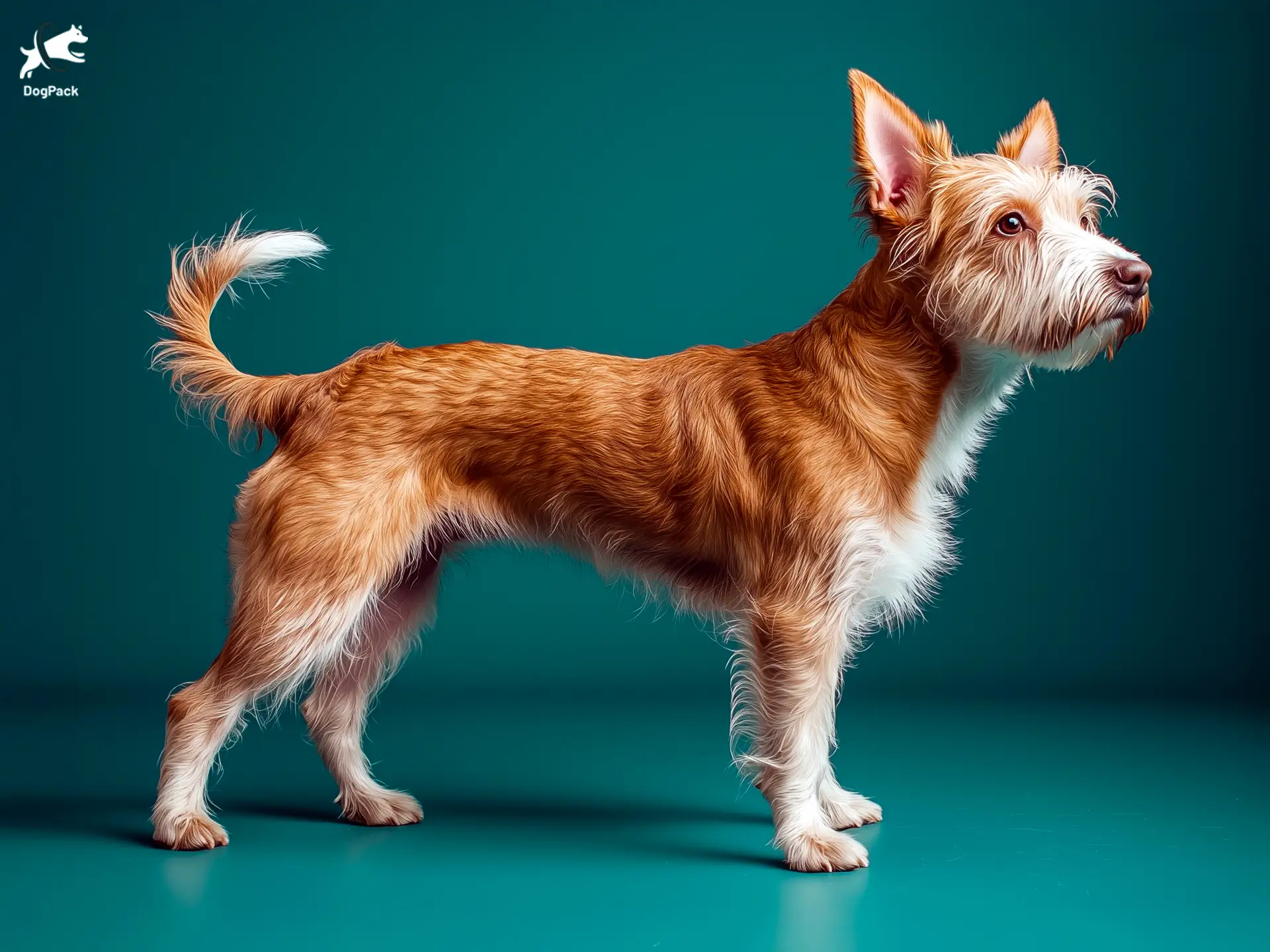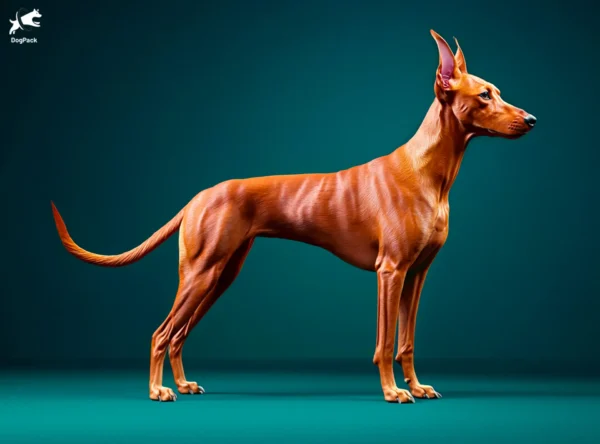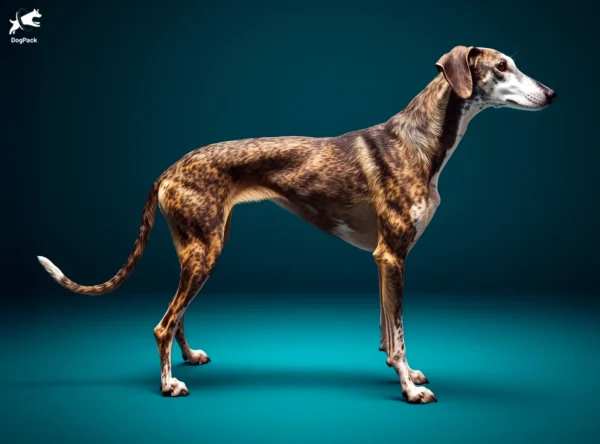Podenco Dog Breed Info & Overview
Podenco dogs hail from the sun-drenched Mediterranean coasts, renowned for their agility and keen hunting instincts. With tall, pointed ears and a lean physique, these hounds excel in speed and stamina. Friendly yet independent, they thrive with active families who appreciate their playful spirit and unwavering loyalty. Their lineage dates back centuries, reflecting the storied hunting traditions of the region.
Characteristics
“Podenco” is not a single breed but a group of ancient Mediterranean hounds bred primarily in Spain and Portugal for hunting small game. Below are the most recognized Podenco types and their key characteristics:
| Podenco Type | Origin | Recognition Status | Key Traits |
|---|---|---|---|
| Podenco Ibicenco (Ibizan Hound) | Balearic Islands (Ibiza) | ✅ FCI, AKC | Tall, elegant, white/red coat, great jumper |
| Podenco Canario | Canary Islands | ✅ FCI | Sleek, tan/red coat, quiet, intense prey drive |
| Podenco Andaluz | Andalusia, Spain | ❌ Not FCI | Three sizes (small, medium, large); skilled rabbit hunter |
| Podenco Valenciano (Xarnego Valencià) | Valencia, Spain | ✅ RSCE (Spain) | Medium size, used for rabbit hunting, wiry or smooth coat |
| Maneto (Podenco Maneto) | Andalusia, Spain | ✅ RSCE | Short-legged, smooth coat, low-to-the-ground body |
| Podenco Orito Español | Murcia, Spain | ✅ RSCE | Rare; tricolor coat, similar use to Canario |
| Podenco Galego | Galicia, Spain | ❌ Rare/unrecognized | Rustic hunter, medium size, little international info |
| Portuguese Podengo | Portugal | ✅ FCI | Comes in 3 sizes (Pequeno, Médio, Grande) and 2 coat types (smooth/wiry) |
Pictures
Breed History
Traces of Podenco ancestry likely stretch back thousands of years, with some historians suggesting ties to ancient Egyptian sighthounds. Over centuries, these agile canines traveled to Spain with traders and settlers, adapting to the rugged terrains of the Balearic Islands and the Canary Islands, where they became skilled rabbit hunters.
As centuries passed, each region developed its own distinct variation of these resourceful hounds, leading to subtypes like the Podenco Ibicenco, Canario, and Andaluz. Despite their differences in size and coat, these varieties all shared the same remarkable speed, keen senses, and steadfast loyalty that endeared them to local communities.
Today, these Spanish hounds remain relatively rare outside their homeland, though enthusiasts worldwide prize them for their athletic prowess and enduring spirit. Breed clubs have formed to preserve their heritage, advocating responsible breeding and showcasing their talents in lure coursing and field trials, ensuring the Podenco legacy endures for generations.
Temperament, Personality
Light-hearted and lively, these dogs are brimming with curiosity. They relish chasing small critters, so secure fencing is a must. Although naturally wary of strangers, consistent socialization helps them warm up, revealing a friendly side beneath that watchful exterior. Their independent nature can surface at times, making patient, consistent training techniques essential.
When introduced to children early on, they often become playful companions, though they may be reserved with new faces initially. Their sensitivity to tension means they thrive in calm households, responding best to gentle guidance. With the right environment, these dogs forge strong bonds with their families, showing unwavering loyalty once trust is established.
Podenco dogs exhibit an inquisitive spirit that keeps life interesting. They enjoy mental stimulation through puzzle toys or interactive play, which helps prevent boredom. While not typically clingy, they appreciate quality time with their humans. Balancing independence with affection, these hounds are a unique blend of alert watchdog and devoted companion.
Physical Characteristics
Sleek and athletic, these hounds have a distinctive profile marked by tall, upright ears. Their streamlined bodies are built for speed, allowing them to dash across open fields in pursuit of game. Unlike some hounds, they often sport a wiry or smooth coat, with shades ranging from light beige to deep red.
Most varieties maintain a lean, muscular physique, emphasizing agility over bulk. Their limbs are long and strong, contributing to an elegant stance that belies their robust working capabilities. Though appearances vary slightly among regional types, each displays the signature elongated muzzle, keen eyes, and poised posture characteristic of this Mediterranean lineage.
A Podenco’s short, dense coat makes them relatively easy to groom, but it doesn’t provide heavy insulation in colder climates. Owners often keep an eye on the temperature, especially if outdoor excursions occur during chilly seasons. Sleek lines combined with balanced proportions contribute to a unique silhouette rarely mistaken for other breeds.
Health Issues
Generally resilient, these hounds are not prone to a large array of hereditary conditions. However, like many active breeds, they can be susceptible to joint issues such as hip dysplasia. Regular vet check-ups and preventive measures, including a balanced diet and supplements, can help maintain healthy bones and joints throughout their lives.
Ear infections may arise if moisture or debris gets trapped in those iconic upright ears, so routine cleaning is recommended. Eye examinations also benefit this breed, as early detection of any issues ensures quick treatment. Dental care is equally important, especially for older hounds, to prevent periodontal disease and tooth loss.
Podenco dogs often enjoy robust overall health, but consistent monitoring and proactive measures are key. Scheduling annual wellness exams helps catch potential problems early, whether it’s parasitic infections or orthopedic concerns. By partnering with a knowledgeable veterinarian, owners can create a personalized health plan that keeps these spirited canines in top condition.
Grooming Needs
Thanks to their short coat, these dogs don’t require extensive grooming. A weekly brush with a soft bristle brush or rubber mitt helps remove loose hair and maintain skin health. Regularly checking for ticks or fleas is also crucial, especially if they spend time exploring fields or wooded areas on outdoor adventures.
Bathing is generally minimal, unless they’ve had a particularly muddy romp. A gentle dog shampoo suffices, ensuring natural oils remain intact. Some Podenco owners opt for occasional professional grooming if their hound has a wiry coat type. This keeps the fur in optimal shape while preventing uncomfortable matting around sensitive areas.
Trimming nails every few weeks helps avoid overgrowth, which can cause discomfort. Be mindful of ear hygiene, particularly after outdoor excursions; a simple wipe can remove dirt and reduce infection risks. Regular dental cleaning or chew toys also support healthy teeth and gums, contributing to overall well-being for these graceful hounds.
Exercise Requirements
High-energy by nature, these dogs need ample physical and mental stimulation. Long walks, brisk jogs, or even bike rides can help channel their enthusiastic spirit. Because of their strong prey drive, allowing them off-leash in unenclosed areas can be risky. Instead, many owners use spacious yards or dog parks for safer play sessions.
Engaging puzzle toys, scent tracking games, or structured agility courses are excellent options for burning energy and sharpening the mind. These hounds excel in lure coursing, a sport that mimics their historical rabbit-chasing instincts. Providing daily opportunities to run or sprint can prevent restlessness and channel their natural athleticism constructively.
For a Podenco, mental fatigue can be as important as physical exercise. Incorporating brief training sessions or interactive games helps satisfy their curious temperament. If given plenty of stimulation, they’re typically calmer indoors. Ultimately, a well-exercised hound is more relaxed, making these dogs wonderful companions for those who appreciate an active lifestyle.
Training Tips
Patience and positive reinforcement go a long way with these intelligent but sometimes stubborn hounds. They respond best to reward-based methods that tap into their keen sense of smell or love for chasing. Harsh techniques often backfire, leading to distrust or evasion, so gentle guidance encourages cooperation and fosters strong bonds.
Short, frequent sessions keep them engaged without overwhelming their independent streak. Incorporating play as a reward, such as a quick fetch session, can make learning more enjoyable. Consistent rules around the home help them understand boundaries, though a little patience is needed as they test those limits with natural curiosity.
Podenco puppies may benefit from early socialization in various environments, meeting people and friendly dogs. This exposure builds confidence and reduces shyness. Leash training can be especially important, considering their very strong prey drive. A calm, consistent approach works wonders, laying a vital foundation for a well-behaved companion in adulthood.
Nutrition, Diet
Adult hounds of this breed often do best on a high-protein, moderate-fat diet that supports their active lifestyle. A typical Podenco weighing around 60 pounds may consume roughly 2.5 to 3 cups of quality kibble daily, split into two meals. Protein sources like lean poultry or fish can maintain lean muscle mass.
These agile hounds benefit from nutrient-dense food, so checking labels for real meat as the primary ingredient is crucial. Complex carbohydrates, such as brown rice or sweet potatoes, provide sustained energy. Owners who prefer raw or home-cooked diets should consult a veterinary nutritionist to ensure balanced vitamins, minerals, and proper calcium levels.
Because these dogs love to run and jump, monitoring their body condition is essential to avoid weight-related joint strain. Overfeeding can lead to unwanted pounds and reduced agility. Frequent weigh-ins and portion adjustments help maintain a lean silhouette. Treats are fine in moderation, ideally from nutrient-rich sources rather than empty calories.
Adoption, Breeders
Finding a reputable source for these rare hounds can require patience. In regions like the United States or Northern Europe, dedicated rescue groups sometimes bring them from Spain. Before committing, research local laws regarding importation and vaccinations. Connecting with breed-specific clubs or online forums can provide leads on ethical adoption routes.
For prospective owners interested in formal breeders, attending dog shows or contacting associations like the Ibizan Hound Club of the United States can be beneficial. Genuine breeders will screen their stock for genetic health issues and discuss the breed’s unique traits. Beware of deals that seem too good to be true.
To save a Podenco in need, consider charities like Podenco Friends that focus on rehabilitation and rehoming. These organizations provide invaluable support, ensuring dogs receive medical care and proper socialization. Whether adopting or buying from a trusted breeder, thorough research and a stable home environment are pivotal to a happy, long-term partnership.
Family Pet?
Though known for their hunting prowess, these dogs often adjust well to family life, provided they get enough exercise. They can form tight bonds with older children who respect their space and energy levels. Patience is vital, as their cautious nature may cause them to watch new visitors from a comfortable distance.
Proper socialization can reduce any skittishness, especially around smaller kids. Ideally, supervised interactions help teach both dog and child how to engage respectfully. While they do enjoy affection, this breed values having a quiet retreat when needed. Teaching children to recognize signs of stress can promote a harmonious household for everyone.
A Podenco’s prey drive might be high around small pets, so introductions should be careful and slow. With proper training and vigilant supervision, many can coexist with cats or smaller companions. Families willing to invest time in exercise, enrichment, and establishing clear boundaries often find these hounds a rewarding addition.
Right For You?
If you appreciate a dog with stamina and a strong hunting instinct, these hounds may be your ideal match. They thrive in environments that offer plenty of physical and mental activity. Apartment living might be possible, but only with a robust exercise plan. Without ample stimulation, they can channel their energy into mischief.
Training consistency and patience are crucial for anyone considering this breed. Experienced owners or those willing to learn positive reinforcement techniques will succeed best. If you enjoy the outdoors and can handle a dog that loves to run, these hounds will repay you with spirited companionship and unwavering devotion.
Ultimately, a Podenco does best with guardians who can balance firm boundaries and attentive care. They excel in households that appreciate their independent streak, while still dedicating time to structured activities. If your lifestyle aligns with an active, outdoorsy routine, you may find that this unique hound is the perfect fit.
Conclusion
Choosing a Podenco means embracing an energetic, intelligent companion with an ancient heritage. Their spirited personality and keen senses can be incredibly rewarding for owners who appreciate a breed that’s both playful and self-reliant. While not suited to everyone, especially those uninterested in daily physical or mental challenges, they can excel in active homes dedicated to consistent training and socialization. In return, you’ll gain a loyal friend with a unique history and an endearing zest for life. If you’re drawn to a dog that thrives on exploration and forms strong bonds once trust is earned, the Podenco could be your new cherished companion.
FAQs
-
What’s the difference between a Podenco and a Galgo?
Though both are Spanish sighthounds, Podenco dogs use sight, scent, and hearing when hunting, while Galgos are primarily visual hunters. Podencos are more alert and energetic, while Galgos tend to be quieter and more reserved in temperament.
-
Are all Podenco breeds the same size?
Podenco breeds vary widely in size and build. For example, the Podenco Ibicenco is tall and elegant, while the Podenco Andaluz has both standard and miniature varieties. Despite similar traits, their sizes differ by region and purpose.
-
Why are Podenco dogs often seen in rescue groups?
In parts of Spain, Podenco dogs are sadly abandoned after hunting season. Though loyal and intelligent, they’re frequently overlooked in shelters due to misconceptions. Rescue organizations work to rehome them across Europe and North America.
-
Do Podenco dogs really climb or jump fences?
Yes, many Podenco dogs are agile jumpers and climbers, often clearing fences over 6 feet. Their lean bodies and strong legs make escape-proof fencing essential for safe containment in homes or yards.
-
Are Podencos suitable for first-time dog owners?
Podenco dogs are independent thinkers with a strong prey drive. While loving and fun, they’re better suited to experienced owners who understand how to provide structure, enrichment, and secure environments to meet their unique needs.
Breed Ratings
The Podenco demonstrates sharp problem-solving skills but can be selectively attentive due to its independent streak.
Enthusiastic and full of energy, Podencos enjoy engaging games, but they may need breaks for independent exploration.
Podencos are high-octane hounds requiring daily running or vigorous activity to keep their bodies and minds in peak condition.
Although they have a short coat, Podencos do shed moderately. Weekly brushing helps minimize loose hairs around the home.
They have a notably strong prey drive, always ready to chase small animals if given the chance. A secure yard is essential.
Short coats and minimal fuss make them relatively low-maintenance, though occasional baths and ear cleaning are still important.
Smart but independent, they learn quickly with motivation and gentle handling. Consistency is crucial to keep their focus and cooperation.
They prefer human company and may become restless or vocal if left solo too long. A consistent routine can ease separation anxiety.
They will vocalize when alert or anxious, but they’re not incessant barkers. Early socialization helps control excessive noise.
Minimal drooling is typical unless they’ve just finished a run or spotted a tasty treat. Most owners rarely notice excessive saliva.
They can be friendly with well-socialized dogs, but strong prey drive may lead to tension around smaller breeds or timid companions.
They’re robust dogs with relatively few genetic issues. Regular vet checks and proactive care ensure they stay in top shape.

